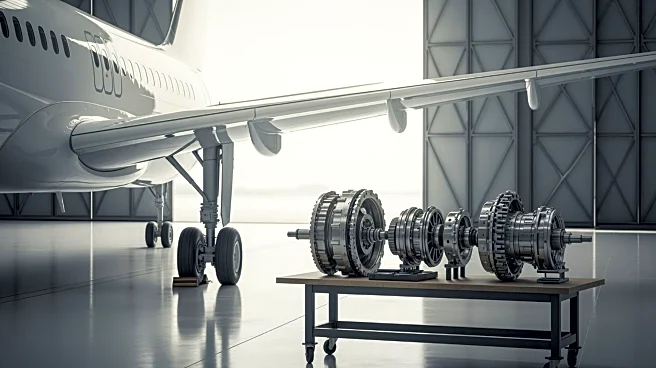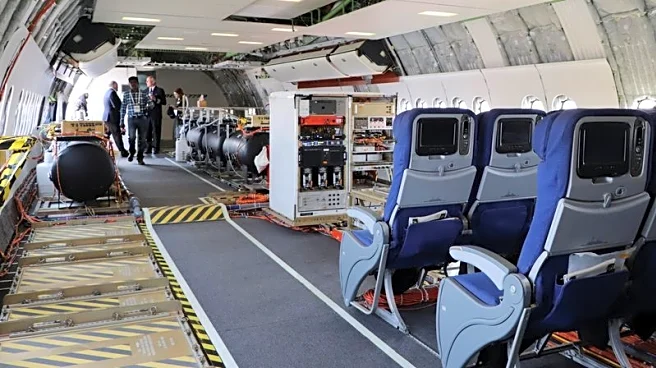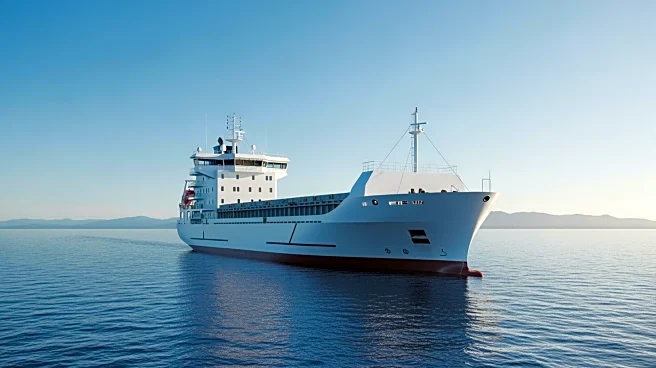What's Happening?
Wizz Air, a leading ultra-low-cost carrier (ULCC), is revising its expansion strategy due to ongoing challenges with Pratt & Whitney GTF engine groundings and adjustments to its Airbus orderbook. The airline
announced changes to its fleet growth plans, reducing the annual expansion rate to 10-12% from fiscal 2027 onward, down from the 20% expected this year. This decision follows the deferral of 88 A321neos into the early 2030s and the conversion of 36 A321XLRs to A321neos. CEO József Váradi emphasized that the restructured order book aims to balance growth with execution risks, ensuring stability over the next decade. Wizz Air's fleet is projected to increase from 256 aircraft in fiscal 2026 to 384 in fiscal 2032, eventually settling at 379 by 2033, a significant reduction from previous targets of 500 aircraft by 2030.
Why It's Important?
The strategic shift by Wizz Air highlights the broader challenges faced by airlines in managing fleet growth amid supply chain disruptions and technical issues. The decision to slow expansion reflects a cautious approach to mitigate risks associated with engine groundings, which have impacted fleet availability. This move could influence other airlines facing similar challenges, prompting them to reassess their growth strategies. The airline's focus on becoming an all-Neo operator by 2029 indicates a commitment to modernizing its fleet for improved efficiency and reduced environmental impact. Additionally, the financial stability demonstrated by Wizz Air, with increased net profit and cash reserves, positions it well to navigate these challenges and maintain operational resilience.
What's Next?
Wizz Air plans to build a pool of approximately 100 spare engines by next summer to support operations and aims to unground its entire fleet by the end of 2027. The airline's recovery plan with Pratt & Whitney is crucial for achieving this goal, although engine turnaround times remain lengthy. The carrier's strategy of selling newly delivered aircraft to lessors for onward lease is expected to continue as a short-term measure to moderate capacity. As Wizz Air navigates these adjustments, stakeholders will be watching closely to see how the airline manages its fleet and maintains profitability amid ongoing industry challenges.
Beyond the Headlines
The decision by Wizz Air to adjust its expansion plan underscores the complexities of fleet management in the aviation industry, particularly in the face of technical and supply chain challenges. The airline's approach to balancing growth with risk management could set a precedent for other carriers, highlighting the importance of strategic flexibility in uncertain times. The focus on fleet modernization and environmental sustainability aligns with broader industry trends towards reducing carbon footprints and enhancing operational efficiency.












